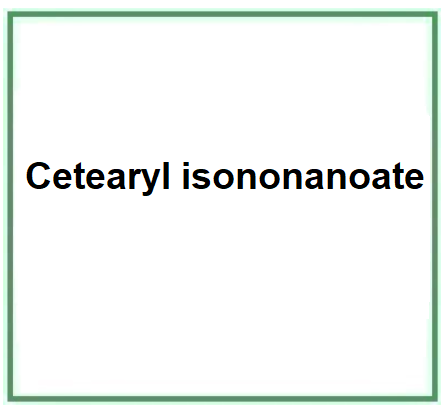Cetearyl isononanoate is a chemical compound, the ester of cetearyl alcohol and a branched-chain nonanoic acid, the ester mixture resulting from the reaction of a mixture of fatty alcohols, containing 16 to 18 carbons in the alkyl chain, with branched chain isononanoic acid.
Description of raw materials used in production and their functions.
- Isononanoic acid. A saturated carboxylic acid used as a raw material for the production of esters. It imparts the emollient properties to the finished product.
- C16-18-alkyl alcohols. These long-chain alcohols react with acids to form esters. They can be derived from natural sources such as fats and oils, or they can be chemically synthesized.
Step-by-step summary of industrial chemical synthesis process.
- Esterification Reaction. The isononanoic acid is reacted with the C16-18-alkyl alcohols in the presence of either an acid or base catalyst. The result of this reaction are the desired esters.
- Purification. The formed esters might need purification to remove any impurities or unconverted reactants. This might include distillation or other purification techniques.
It appears in the form of a polar yellow liquid.

What it is used for and where
Cosmetics
Hair conditioning agent. A large number of ingredients with specific purposes can co-exist in a hair shampoo: cleansers, conditioners, thickeners, mattifying agents, sequestering agents, fragrances, preservatives, special additives. However, the indispensable ingredients are the cleansers and conditioners as they are necessary and sufficient for hair cleansing and manageability. The others act as commercial and non-essential auxiliaries such as: appearance, fragrance, colouring, etc. Hair conditioning agents have the task of increasing shine, manageability and volume, and reducing static electricity, especially after treatments such as colouring, ironing, waving, drying and brushing. They are, in practice, dispersing agents that may contain cationic surfactants, thickeners, emollients, polymers. The typology of hair conditioners includes: intensive conditioners, instant conditioners, thickening conditioners, drying conditioners.
Emollient. Emollients have the characteristic of enhancing the skin barrier through a source of exogenous lipids that adhere to the skin, improving barrier properties by filling gaps in intercorneocyte clusters to improve hydration while protecting against inflammation. In practice, they have the ability to create a barrier that prevents transepidermal water loss. Emollients are described as degreasing or refreshing additives that improve the lipid content of the upper layers of the skin by preventing degreasing and drying of the skin. The problem with emollients is that many have a strong lipophilic character and are identified as occlusive ingredients; they are oily and fatty materials that remain on the skin surface and reduce transepidermal water loss. In cosmetics, emollients and moisturisers are often considered synonymous with humectants and occlusives.
CAS: 111937-03-2
![]() Cetearyl isononanoate
Cetearyl isononanoate 


